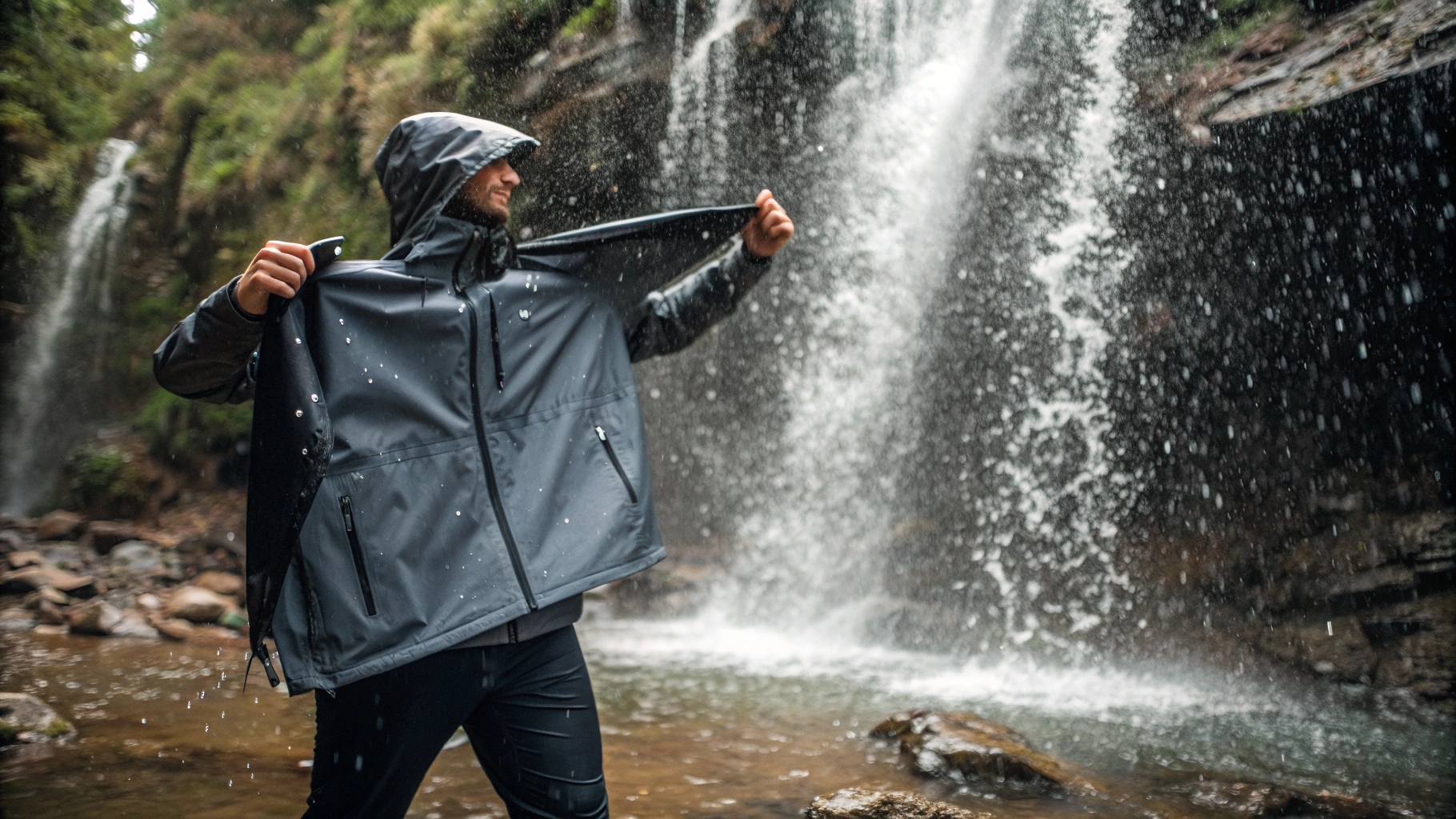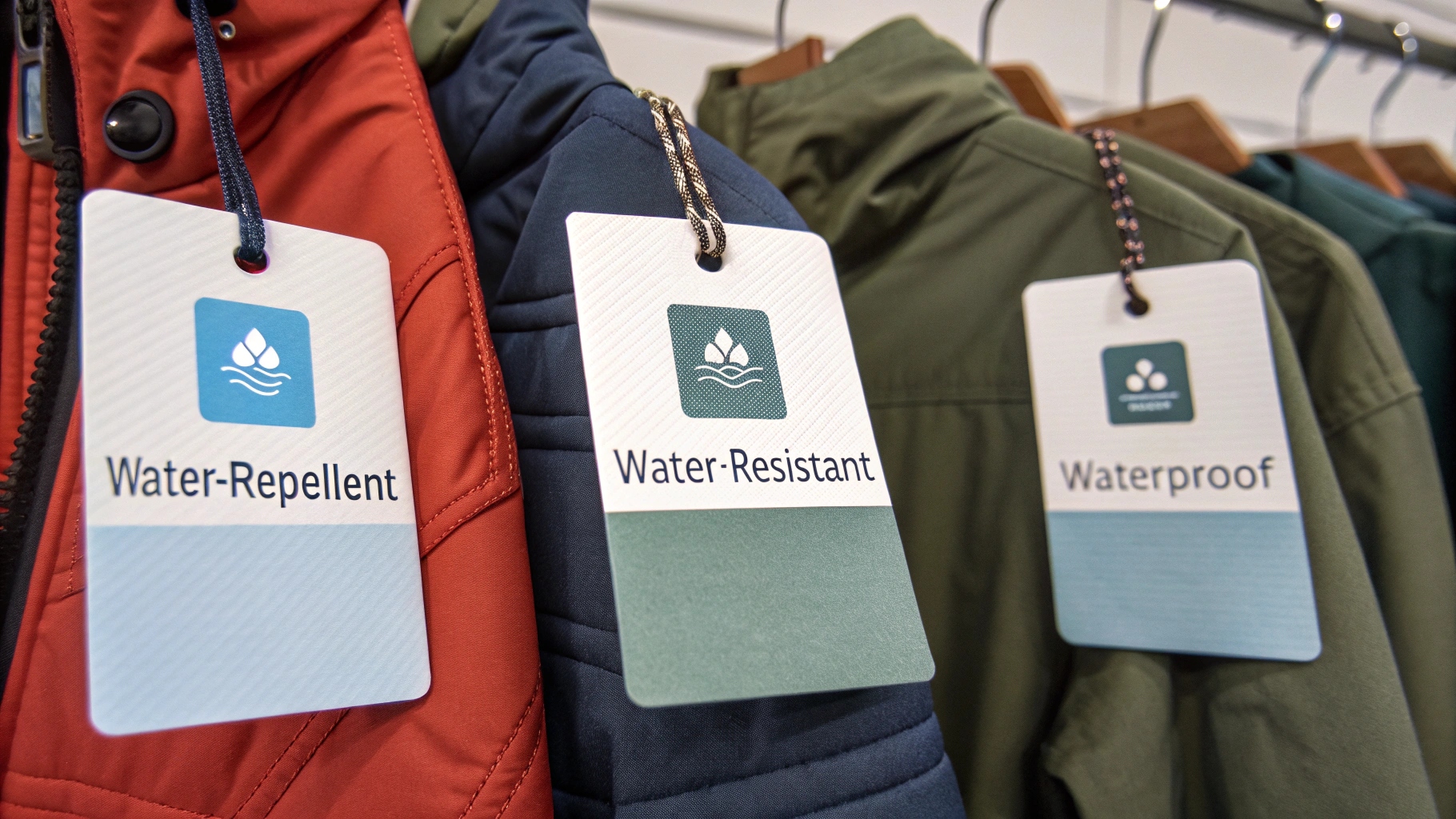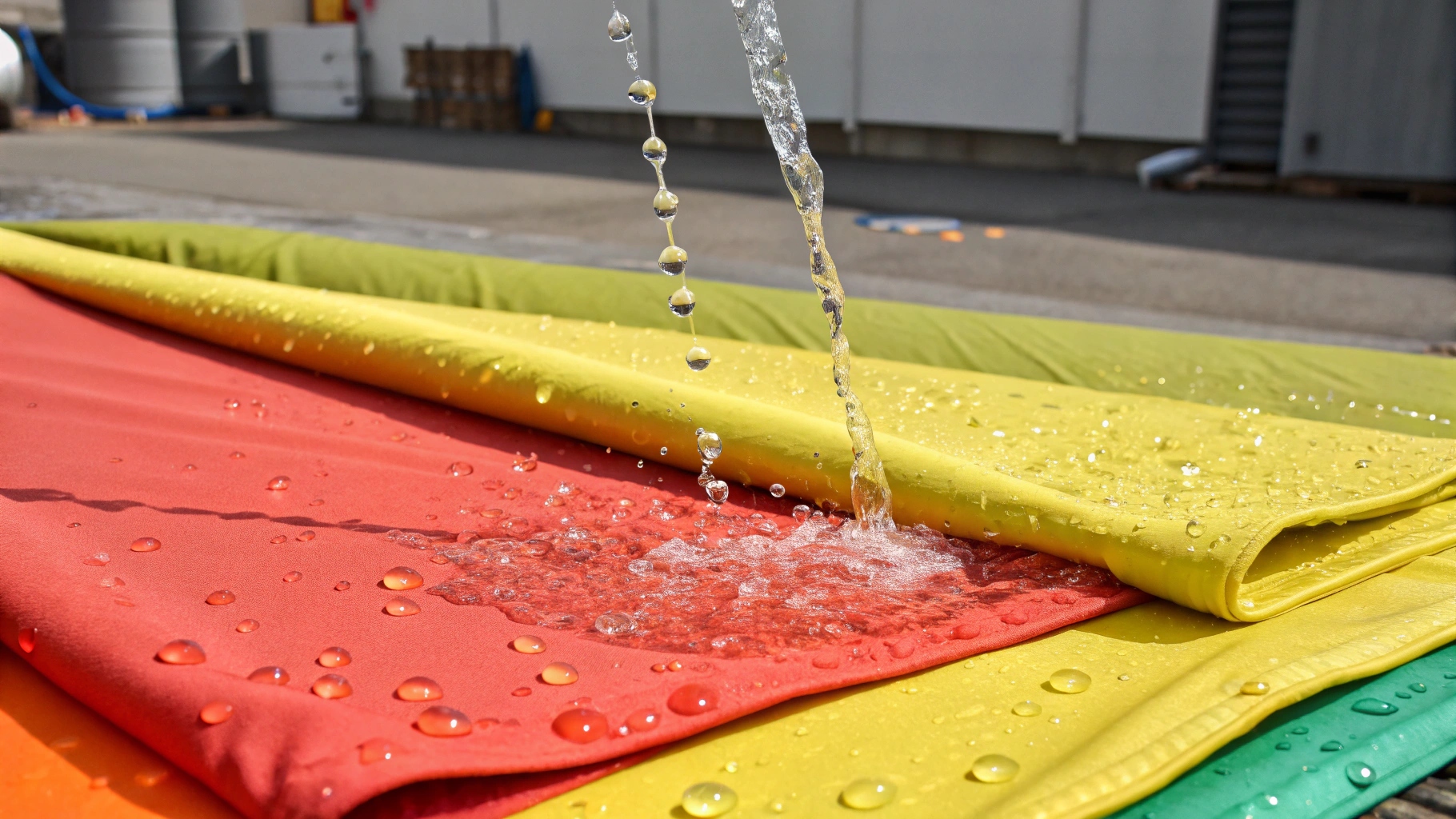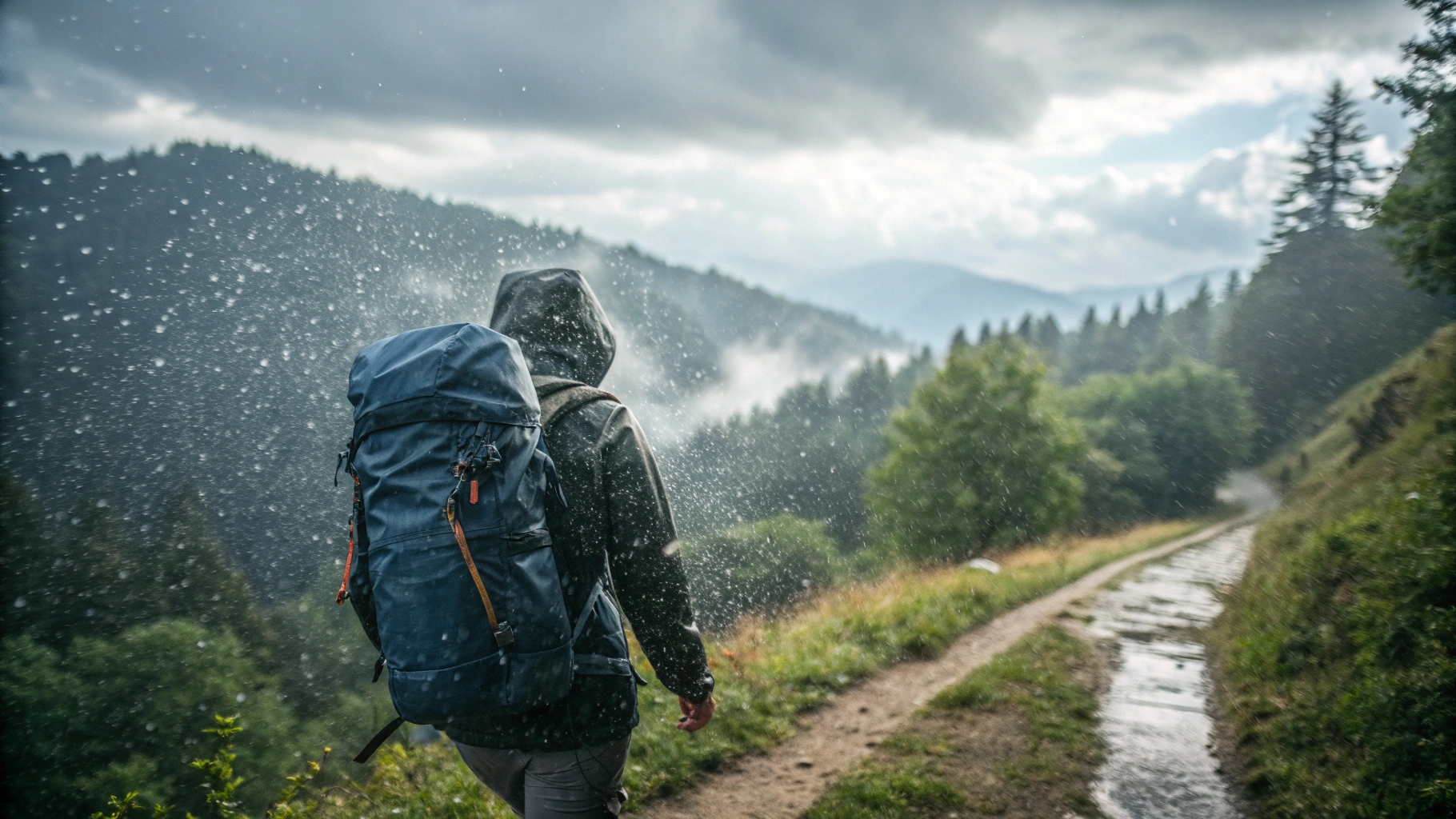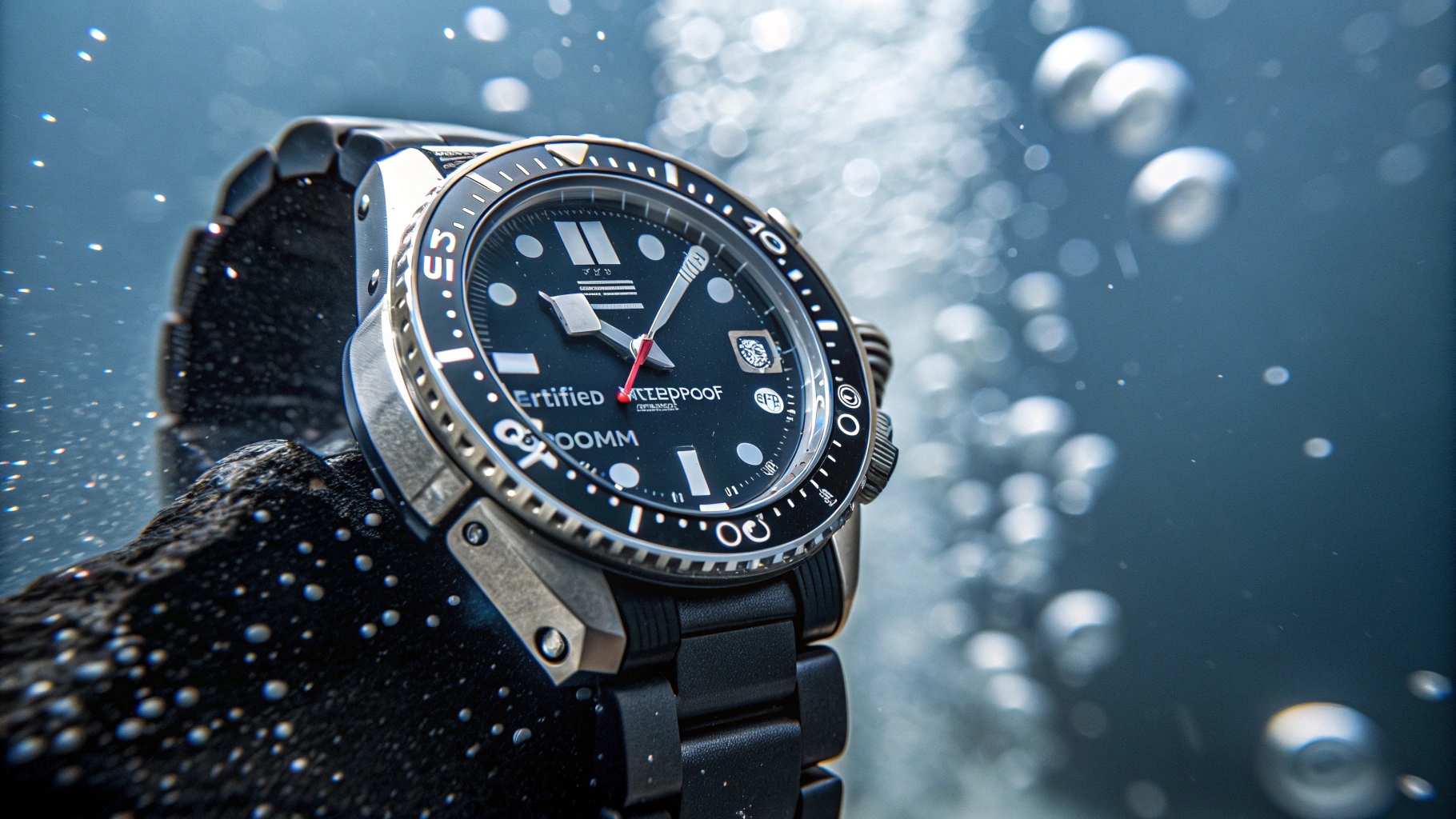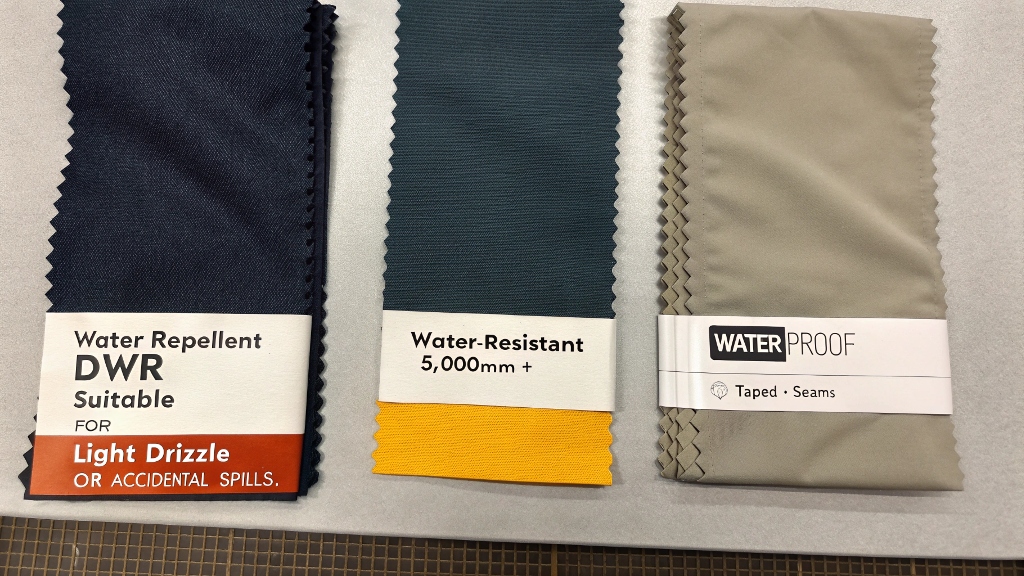Struggling to tell apart water-repellent, resistant, and waterproof claims? This confusion can lead to costly mistakes and products that fail. I'll explain the real technical differences.
"Water-repellent" is a surface finish that makes water bead up. "Water-resistant" handles light water pressure but has limits. "Waterproof" provides a complete barrier to water, is proven by lab tests, and has sealed seams to stop leaks.
These terms may seem similar, but in the textile industry, they describe very different levels of performance. In my years developing chemical solutions, I've seen how choosing the wrong one can disappoint customers and hurt a brand's reputation. To avoid these issues, you need to look past the marketing words and focus on the technical data. Let’s break down exactly what each term means, so you can make informed decisions for your products.
Introduction: Why Do These Water Terms Cause So Much Confusion?
Do marketing terms like "weather-resistant" create problems for your technical team? This vague language causes confusion and leads to products that don't meet customer expectations. Let’s clarify why.
The confusion exists because marketing often uses these terms without supporting data. "Water-repellent" is a surface treatment, "water-resistant" implies protection against pressure, and true "waterproof" performance is verified by specific lab tests. Without this data, the terms are often meaningless.
The main source of this confusion is the gap between marketing language and technical reality. I've consulted for many companies, and I see this problem constantly. A luxury handbag brand might label its product "waterproof," but this usually just means it can survive a rain shower or a spilled drink. It has likely never undergone a formal water pressure test. In contrast, technical outdoor gear claiming to be "waterproof" must pass strict laboratory standards, such as ISO 811. The term "weather-resistant" is even more confusing because it has no official technical definition. It sounds professional, but what does it actually promise? As a technical manager, you must always ask for the test data. The numbers from tests like AATCC or ISO tell the true story, not the slogans on the hang-tag.
What Exactly is Water-Repellent (DWR) and How Does it Work?
Have you ever noticed a new jacket stops beading water after a few wears? This quick failure of the finish can be very frustrating for customers. Let's look at why this happens.
A water-repellent finish uses a chemical treatment called DWR (Durable Water Repellent). It lowers the fabric's surface energy, causing water to form beads and roll off. This is not waterproofing; it's a temporary surface treatment that degrades with use, dirt, and washing.
A water-repellent finish functions through what we call the "lotus effect." The DWR chemical creates a microscopic, spiky texture on the fabric's surface. This texture minimizes the contact area for water, causing droplets to form tight beads and roll away instead of soaking in. The standard lab test for this is the AATCC 22 Spray Test, which gives a score from 0 to 100 based on how well the fabric repels a spray of water. A new garment might score a 90 or 100, which looks great. However, this finish is fragile. Dirt and oil can clog the microscopic texture, and abrasion from use or washing can wear it down. In my experience, probably 90% of customer complaints about a "leaky" waterproof jacket are actually due to the DWR finish failing. The fabric itself may still be waterproof, but once the surface fabric gets soaked, it feels cold, clammy, and seems like it's leaking.
How Effective is “Water-Resistant,” and What Are Its Limits?
Have you ever trusted a "water-resistant" label, only to find yourself soaked in a real downpour? This inconsistent performance can damage a product's reputation. Let's define what true resistance means.
A "water-resistant" fabric is built to resist water penetration under pressure. Its real performance is measured with a hydrostatic head test, like AATCC 127, and is rated in millimeters (mm). Without this number, the "water-resistant" claim is an unreliable marketing promise.
The term "water-resistant" becomes meaningful only when it's backed by a number. This number comes from a hydrostatic head test. In this test, we clamp a piece of fabric and apply an increasing column of water over it. We measure how high the column of water can get, in millimeters, before water is forced through the fabric. A higher number means better water resistance. For example, a basic umbrella might be called "water-resistant," but it may only have a 400mm rating, which is fine for a light drizzle. A good hiking jacket should have a rating of at least 5,000mm to handle sustained rain. When a supplier tells me their fabric is water-resistant, my first question is always, "What is the hydrostatic head rating in millimeters?" This separates a real technical fabric from a simple sales claim. It is important to remember that water resistance is different from water repellency. Repellency is a surface treatment (DWR), while resistance is about the fabric's actual structure preventing water from being pushed through.
What Standards Define True “Water-Proof” Performance?
Are you trying to develop a product that can survive a storm, not just a quick shower? Claiming a product is "waterproof" without meeting the correct standards is a major risk.
True "waterproof" performance is not just about the fabric. It requires passing strict international standards like ISO 811, often with a rating above 8,000mm. Most importantly, all seams must be sealed with tape. Otherwise, water will leak through the stitch holes.
"Waterproof" is not a marketing term; it is a technical benchmark proven in a lab. For textiles, a key standard is ISO 811, which is the hydrostatic head test I mentioned earlier. While a "water-resistant" rating might be 5,000mm, a fabric usually needs to hit 8,000mm, 10,000mm, or even higher to be considered truly "waterproof" for serious applications. However, the best waterproof fabric in the world is useless if the product construction is wrong. The weakest point is always the seams. I could give a client a fabric that resists 20,000mm of water, but if they stitch it into a garment without sealing those stitch holes, the final product is not waterproof. It is a sieve. True waterproof construction requires "seam taping." This process involves applying a special waterproof tape over every single seam with heat and pressure, creating a complete barrier that is just as strong as the fabric itself. This step is not optional for any product that needs to be genuinely waterproof.
Choosing Wisely: Which Protection Level Matches Your Needs? (Repellent, Resistant, or Proof?)
Now you know the definitions, but how do you choose the right one? Using too much protection is expensive and unnecessary, while using too little leads to product failure.
Match the level of protection to the product's final use. For light drizzle or accidental spills, a "water-repellent" DWR finish is enough. For hiking in the rain, you need a "water-resistant" fabric with a 5,000mm+ rating. For extreme weather, demand certified "waterproof" gear with taped seams.
The right choice always depends on the real-world situation the product will face. You have to balance performance with cost and comfort. For example, a water-repellent DWR finish is perfect for a casual city jacket. It provides enough protection against a spilled coffee or a quick run through a light shower without the added cost or reduced breathability of a fully waterproof membrane. However, for a hiking jacket, you need more. You need a water-resistant fabric with a verified hydrostatic head rating to handle sustained rain and wind pressure. Finally, for extreme activities like mountaineering or sailing, failure is not an option. Here, you must use certified waterproof fabric and ensure the garment has taped seams. It’s a matter of safety and performance.
| Need/Scenario | Recommended Protection Level | Key Test Standard |
|---|---|---|
| Coffee Spill / City Use | Water-Repellent (DWR) | AATCC TM 22 Spray Test |
| Hiking in a Light Rain | 5,000mm+ Water-Resistant | AATCC TM 127 Hydrostatic Pressure Test |
| Storms / Heavy Rain | Waterproof + Taped Seams | ISO 811 / ASTM D3393 |
Conclusion
Understanding repellent, resistant, and waterproof is not about words. It's about using the right data and standards to deliver the exact performance your customers need.


